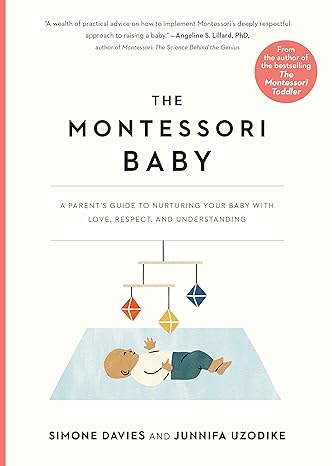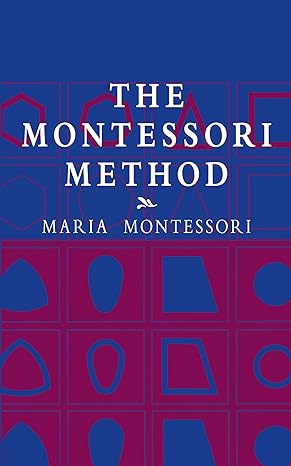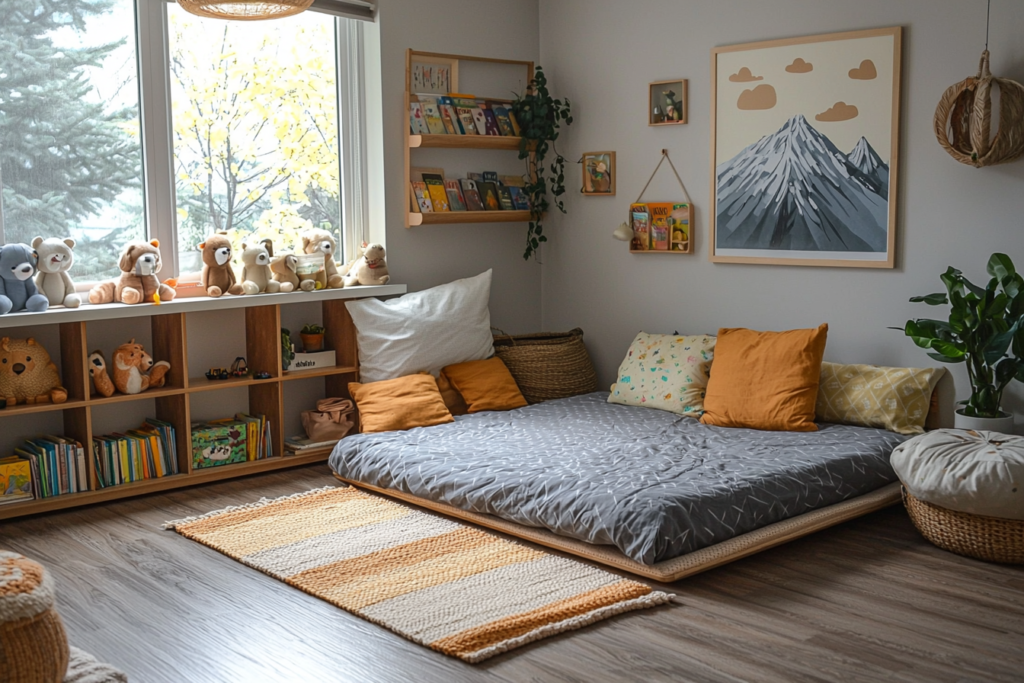This site contains affiliate links, view the disclosure for more information.
Although the Montessori Method has been around for well over 100 years, I feel like it has gained so much more attention and recognition these past 5 to 10 years due to social media.
There are a lot of Montessori parents and educators out there posting beautifully designed playrooms, sensory bin ideas, wooden toys, and kid-sized kitchens. Still, it is hard to find concrete and practical information on what exactly is the Montessori Method.
So, in this blog post, I have tried to gather a little of everything you should know if you are getting started with the Montessori Method at home, or if you are just curious to know more about this educational practice that has gained over the internet in the past years.
Do you love quotes? Check out the best Maria Montessori Quotes on education, child development, and parenting!
We’ll cover a bit of history, the founder Maria Montessori, the Montessori Method, the role of parents and teachers, the Montessori Principles, and finally some book recommendations if you’d like to dive deeper.
I hope you enjoy!
Read more: 6 Easy Ways to Get Started With Montessori at Home.
Table of contents
- The Genius Behind the Method: Who Was Maria Montessori?
- What is the Montessori Method?
- The role of parents and teachers
- Montessori Principles
- Diving Deeper: Book Recommendations
The Genius Behind the Method: Who was Maria Montessori?
Maria Montessori (1870-1952) was one of the first female Italian physicians, who specialized in pediatrics and psychiatry at the University of Rome. She began her career working, researching, and advocating for children with learning difficulties. In the late 1890’s she began auditing the university’s pedagogy classes and studying the main educational theories deeply.

Image by: Biography
In 1900, Maria Montessori was appointed co-director of the Orthophrenic School – where she trained teachers in educating children with learning difficulties. The institute had an attached laboratory classroom where the teachers in training could practice their studies in real-life scenarios, with children who were considered “uneducable” due to their deficiencies.
The school was a great success, attracting the attention of the Government, civic leaders, and prominent figures in the fields of education and psychiatry of the time.

Image by: BBC News
During her time working there, Maria Montessori developed many materials and methods that she later adapted to what we know today as the Montessori Method of Education.
After leaving the Orthophrenic School, Montessori went back to University to study Philosophy (and Psychology, as it was considered part of that field at the time). Although she did not graduate, she began considering adapting her method of teaching children with learning difficulties to one that applied to all kids.
Maria began developing what she initially called “scientific pedagogy” (now known as the Montessori Method) around 1902. In the following years, she engaged in many researches with schoolchildren, published scientific papers on pedagogy, and lectured in the Pedagogic School at the University of Rome.
Casa dei Bambini
In 1907, Montessori opened the first Casa dei Bambini (Children’s House) – a school for children of low-income families in Rome. The first Casa enrolled approximately 55 children between the ages of 2 and 7.

Image by: Raleduc
Maria’s observations of the children from her first classroom laid the foundations of her educational method.
She noted how, contrary to popular belief, the kids were able to pay attention and concentrate deeply on tasks, and, given the choice, preferred practical, real-life activities and Montessori materials over the toys provided for them.
She realized that kids were more eager to learn when they were free to move around and choose what to work on, given a few options. Surprisingly, she also noticed that the children were unmotivated by sweets and other rewards, and became rather very self-motivated.

Image by: Be More Montessori
Based on her observations, she made a series of changes which are now the hallmark of her method.
First, she replaced the heavy and adult-sized furniture for light and child-sized tables and chairs, so that the kids could move them around and rearrange them. She also replaced cabinets with low, accessible shelves for the kid’s books and materials.
Dr. Maria expanded the range of practical, day-to-day activities, such as: washing hands, taking care of pets, cooking, gardening, and other activities to care for the environment and the self.
She continued to observe, adapt, and refine the materials and methods she had developed.

Image by: Montessori 150
The first Casa dei Bambini was a huge success, and 4 more were opened in the subsequent years.
The children educated in her schools were eager to learn, focused, self-motivated, and more proficient in reading and writing than what was expected for their ages.
Maria Montessori gave up her medical practice and resigned from her position at the University of Rome.
She dedicated the rest of her life to the further development of her “Scientific Pedagogy” and training courses in her methods.

Image by: The Montessori School of Boise
What is the Montessori Method?
When you search the internet for this answer you’ll find 9 out of 10 times that Montessori is an educational method.
Although this is by no means wrong, in my personal opinion, above all, the Montessori Method is about recognizing kids as individuals with rights, potential, intelligence, and creativity, deserving respect, trust, a voice, and an active role in their own lives.
All of this comes alive in both an educational practice and a parenting style.

In education, the Montessori Method provides each child with their own educational needs, meaning that it is individualized and adapted to the child’s learning style, pace, and personal interests.
In a Montessori Classroom, children are free to move around, experiment, choose, and engage deeply in an activity without being interrupted.
Perhaps this is why Montessori works so well. Children educated in a Montessori school tend to learn how to read, write, and do basic mathematics earlier (and with way less effort) than children educated in traditional schools.
Because they are deeply respected and have a lot of freedom, they are highly motivated, develop a great relationship with learning (and actually love to learn), and naturally apply themselves.
Read more: The Best Montessori Books: Beginner to Advanced.

As a parenting style, the Montessori Method has a lot to do with how parents view and treat their children and the environment they create at home (and outside of it).
Treating your child with deep respect, taking into consideration their preferences, interests, and choices, and allowing them to participate actively in the home and family’s activities is a great way to start applying Montessori at home.
Another key aspect is having a prepared environment that allows the child to explore, experiment, learn, and participate. We’ll dive deeper into what that looks like down below.

The Montessori Method aims to successfully develop all areas of the child: cognitive, emotional, social, and physical.
And it does so by encouraging:
- hands-on learning
- self-directed activities
- few interventions
- independence (with safety, of course)
- collaborative play
- practical life activities
- child-led learning
- free play and outdoor play
- and more
Check out these 7 Simple Activities for Boosting Your Toddler’s Fine Motor Skills!
The role of parents and teachers
In the Montessori Method, teachers are not considered the guardians of all the knowledge, but rather guides and facilitators of education. The role of the Montessori educator is to get to know each child, observe their interests and learning styles, and introduce and direct them to activities and materials suited to their stage of development and preferences.
They may also present collective or individual lessons that are brief and precise, and follow up with related activities so that the child may explore, try, make mistakes, and learn.

Similarly, parenting the Montessorian way is getting to know your child deeply, understanding their preferences, interests, strengths, and needs, and being there to guide them and provide opportunities for them to explore what they are drawn to.
That is the role of a Montessori parent.

Montessori Principles
Prepared environment
The prepared environment is possibly the main principle of this method.
It consists of a room, space, or area where most things have a purpose and are organized and accessible.

Image by: @mae.montessori
If you have stumbled across Montessori Instagram or Pinterest pages before, then you have probably noticed a theme: wooden low bookshelves, small chairs and tables, floor beds, and stools.
All of that is intentional.

Image by: @sunny_wohnfuehlen
Overall, wooden furniture and materials are preferred to super colorful, illustrated ones, simply because they are more calming and less distracting. This allows the child to concentrate deeply and promotes a calmer, less stimulated state of mind.

Image by: @mariahrnorth
To promote autonomy and freedom of choice, child-appropriate materials should be at child height. This is not limited to books and toys but includes:
→ healthy snacks
→ tableware
→ clothes
→ simple, child-sized cleaning supplies, etc
And when that is not possible, as in the kitchen or bathroom, a step stool is a great asset to bring them to counter and sink height, so that they can observe, engage and contribute.

Image by: @mariahrnorth
When people think of Montessori, they usually think of plenty of wooden toys, an infinite amount of books, stools, climbing toys, stepping toys, jumping toys… But, in reality, the Montessori Method calls for less. Less toys, less things, less distraction, giving space for more creativity, imagination, exploring, participation, and connection.
Keeping it minimal, accessible, simple, and organized is a great way to create a prepared environment.
Read more: How to Start a Quick and Easy Toy Rotation System.
“When the atmosphere encourages learning, the learning is inevitable.”
Elizabeth Foss
Respect for the child
The genuine and deep respect for the child is a great part of the Montessori Method. This includes respecting the child’s unique personality, interests, learning pace and style, preferences, choices, freedom to move, make mistakes, learn, and work at their own pace.

“Children are human beings to whom respect is due, superior to us by reason of their innocence and of the greater possibilities of their future.”
Maria Montessori
Absorbent Mind
Doctor Maria Montessori called the first six years of the child’s life the “absorbent mind” stage. Through her observations, experiences, and studies, she noted that, during these first years, children had an enormous, effortless capacity for learning and absorbing nearly everything from their environment. This includes learning about their culture, the world, and constructing the foundations of their personality and their relationships with others, with their family, and with themselves.
“The most important period of life is not the age of university studies, but the first one, the period from birth to the age of six.”
Maria Montessori

Child-led learning
Children learn more and better when they are having fun and learning something they are interested in. If they are provided with the environment and materials, they can teach themselves and immerse completely in a specific task or subject until they’ve figured it out.
When child-led learning is cultivated, children grow up loving to learn and don’t need any outside reward or punishment in order to do it.

“The goal of early childhood education should be to activate the child’s own natural desire to learn.” – Maria Montessori
Sensitive periods
Sensitive periods are specific stages in the child’s development when they are especially able to learn specific skills or knowledge. Doctor Maria Montessori viewed these as windows of opportunity for learning, which presented themselves based on the stage of development, interest, focus, repetition, and commitment to the task.

Freedom of movement and choice
One of the first things that stood out from the Montessorian way of education, compared to traditional education at the time, was that children learned more and were more engaged when they had the freedom to move and choose to follow their interests.
However, this freedom of movement and choice is only possible when there is a prepared environment in the first place.
It goes without saying that a child’s freedom cannot be absolute or without boundaries. Still, considering that the environment has been prepared, the child may have the freedom to move within it and choose from the options available.
Read more: What is FREE PLAY and How to Get Started.

Independence
The Montessori Method aims to educate for independence. Through a prepared environment and prepared teachers/parents, children learn to do and think for themselves.
The sense of autonomy helps build self-confidence and discipline, two very important factors in today’s world.

“The greatest gifts we can give our children are the roots of responsibility and the wings of independence.”
Maria Montessori
Intrinsic motivation
It is one of the Montessori principles that children develop a strong intrinsic motivation, rather than depend on constant external motivation for learning and behaving in a certain way.
In a Montessori school, there are no gold stars or “student of the month” cards. Instead, children become self-motivated by the sense of accomplishment and pride in completing tasks, learning from their mistakes, and doing things on their own.
Parents are encouraged to avoid rewards such as sweets, points for good behavior, stickers, money, etc… And rather nurture a home environment where children are allowed and encouraged to make mistakes and learn from them; try new things, fail, and then try again; self-evaluate; make decisions and understand the consequences; participate in the family life and home activities.

Book recommendations
In this blog post, I tried to cover as much information as possible on the foundations of the Montessori Method. But it has much more depth, richness, and complexity than what is covered here.
If you are interested in learning more or want to apply the Montessori Method at home, I strongly recommend that you read at least one of these books:
The Montessori Baby
If you are expecting or have a newborn baby, I highly recommend The Montessori Baby. This is a great book to help parents get started with Montessori at home from birth.
It is very practical, has many modern examples, infographics, routines, and it is very well written as well.

The Montessori Toddler
From the same series of The Montessori Baby, The Montessori Toddler is an amazing book if your baby is already one or if you have multiple kids!
This book is a very straight-forward guide that has nearly everything you need to get through the first years of your kid’s life without any other Montessori resources.

The Montessori Method
If you are a parent who has already studied the basics and would like to dive deeper and understand the history, foundation, and development of The Montessori Method from Dr. Maria Montessori herself, this book is for you!
It is not such an easy read as the other 2 and can be quite dry and heavy at times, but it is definitely worth it if you’re interested in understanding the background, the foundations, and the concepts deeply.
I would also highly recommend this book for educators, child psychologists, and anyone who works with or around children!

I hope you found this helpful! Check out my latest blog posts below!




